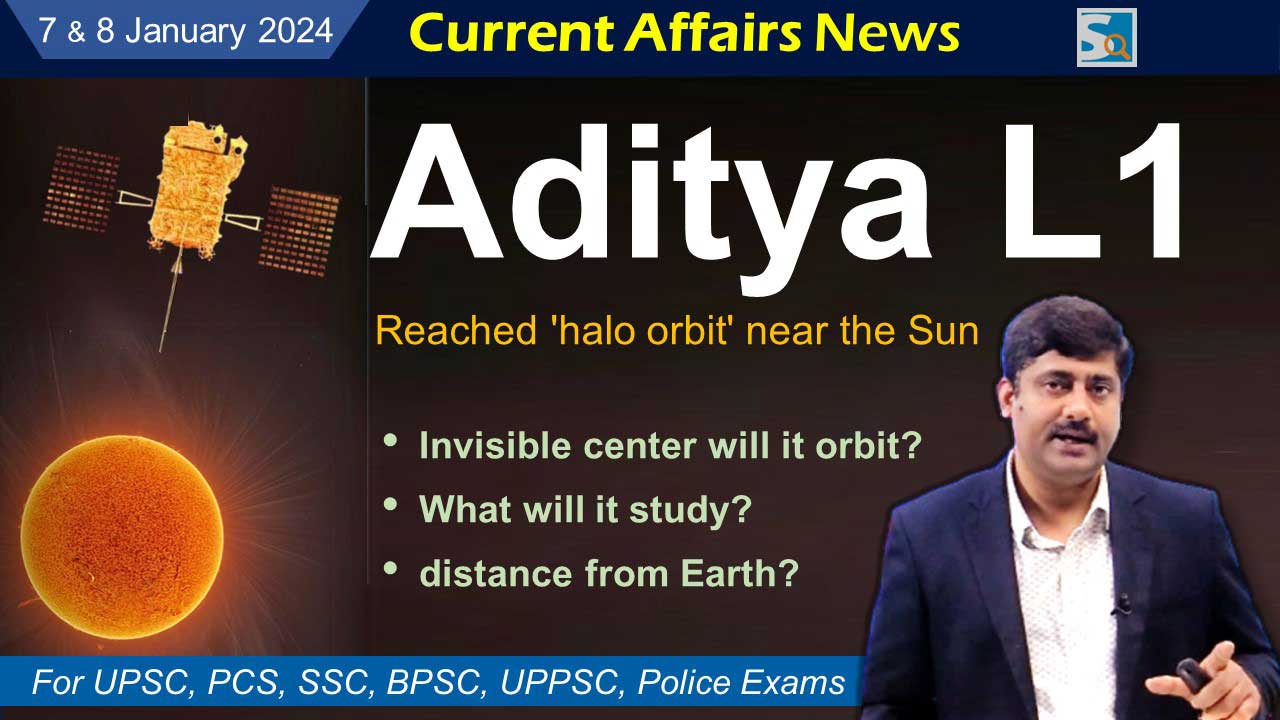This is the current affairs of 7 & 8 January 2023. Here are questions and answers of daily current affairs for better preparation of competitive exams for government jobs.
PDF Download: Click here
1. What is the purpose of spacecraft Aditya L1?
a. Study of the Moon
b. Study of Sun
c. Study of Mars
d. Study of Saturn
Answer: b. Study of Sun
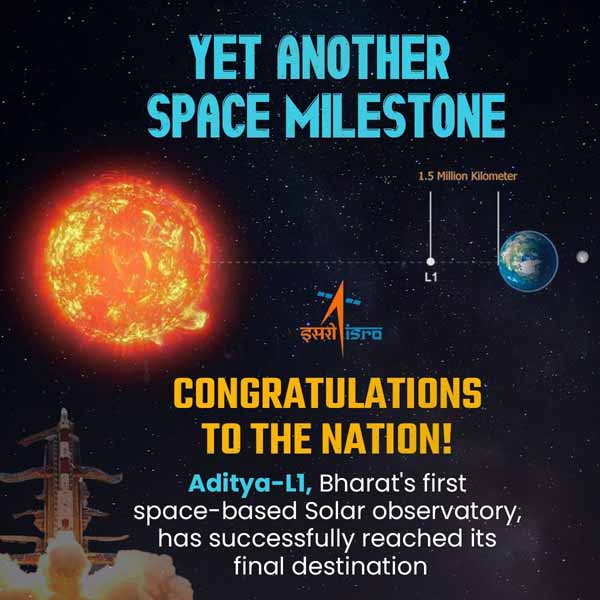
Why is the study of the sun necessary?
– The center of the solar system in which our Earth is located is the sun itself.
– All eight planets revolve around the sun.
– Life on Earth exists because of the sun.
– Continuous energy flows from the sun.
– We call these charged particles.
– By studying the sun, it can be understood how the changes in the sun can affect space and life on Earth.
—————
2. Where did Aditya L1 reach in space, from where it is orbiting an invisible center (halo orbit)?
a. Lagrange point 2 (L2)
b. Lagrange point 3 (L3)
c. Lagrange point 1 (L1)
d. Lagrange point 4 (L4)
Answer: c. Lagrange point 1 (L1)
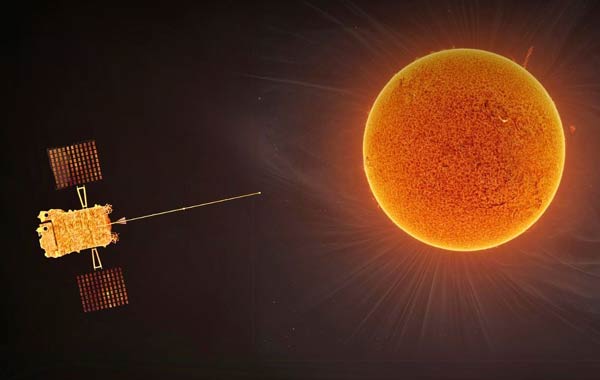
—————-
3. At how many kilometers distance from the Earth did Aditya L1 reach, from where it will help in the study of the Sun?
a. 12 lakh kilometers
b. 15 lakh kilometers
c. 21 lakh kilometers
d. 15 crore kilometers
Answer: b. 15 lakh kilometers
– Aditya L1 started studying the sun.
– Reached Lagrange Point 1 (L1) on January 6, 2024.
– Distance from Earth: 1.5 million km.
– Launch Date: September 2, 2023.
– Launched from: Satish Dhawan Space Centre in Sriharikota, Andhra Pradesh.
– Launched by: PSLV-C57 XL version.
– Days taken to reach from Earth to L1: 126 days.
—————
4. What exactly is Aditya L-1?
a. Solar Satellite
b. Space Observatory
c. Rover
d. none of these
Answer: b. Space Observatory
Aditya L1 is, in fact:
– Aditya L1 is a space probe.
– It is an observatory in space with instruments such as a space telescope.
– It will observe the Sun and continue studying it.
Is it like other satellites we have sent, which orbit the Earth?
– No, it will not orbit the Earth.
– It will orbit a point in a straight line between Earth and the Sun, approximately 1.5 million kilometers away from Earth.
– This point is known as the Lagrange-1 point.
The class of orbit around the L1 point is called a Halo Orbit.
– Understanding Aditya L1 requires first understanding the concept of Lagrange points.
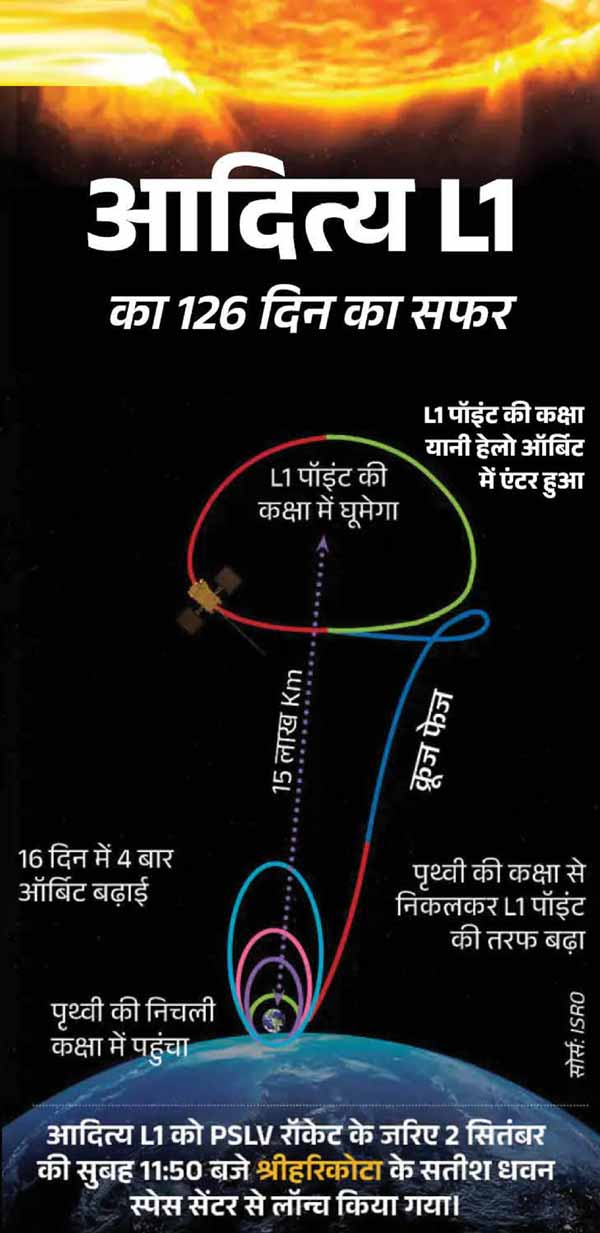
Lagrange-1, or L1, is:
– Lagrange points are locations between two celestial bodies (such as Earth-Sun or Earth-Moon).
– Objects placed at Lagrange points remain stable there because they are equally influenced by both bodies’ gravitational forces.
– There can be several Lagrange points between two bodies.
– For example, in the Earth-Sun system, there are five points – L1, L2, L3, L4, and L5.
So, is a Lagrange point located between two celestial bodies?
– It is not necessary for it to be ‘between.’
– For instance, in the Earth-Sun system, only L1 is between Earth and the Sun.
– L2 (where NASA’s James Webb Space Telescope is positioned) is on the opposite side of Earth.
– L3 is on the opposite side of the Sun.
– Both L4 and L5 are on either side of the line connecting Earth and the Sun. If you draw a line between Earth, the Sun, and L4 (or L5), you form an equilateral triangle.
So, can a spacecraft at Lagrange points stay in a stable position?
– No, it cannot.
– An object at a Lagrange point, such as Aditya at L1, is subject to gravitational disturbances caused by the activities of celestial bodies in space.
– For example, when the Moon comes between Earth and the Sun, it exerts its gravitational pull on the spacecraft.
– All celestial bodies, like other planets and moons, affect the stability of a spacecraft.
– ISRO will control it from Earth, and it also has limited fuel capacity to maintain stability even after the gravitational pull of other bodies.
So, can it not remain stable at point L1?
– The spacecraft at L1 does not remain ‘stationary’ at a specific location. It orbits an invisible center.
– It will orbit an invisible center slightly faster than 1 km per second. This is called a Halo Orbit.
– The biggest challenge in the Aditya L1 mission is to carefully ‘position’ the spacecraft at a chosen point, where it will start orbiting like a merry-go-round.
Why are we studying the Sun?
– The Sun releases energy in two ways:
1. The continuous flow of light that illuminates the Earth and makes life possible.
2. There is an explosion of magnetic particles (magnetic particles) from the Sun, which is called a solar flare. When this flare reaches Earth, the Earth’s magnetic field protects us from it. If it collides with satellites in space, it can be damaged, leading to disruptions in communication systems and other things on Earth.
– Therefore, ISRO wants to understand the Sun. If scientists have a better understanding of solar flares, proactive measures can be taken to deal with them.
Aditya L1 Objectives:
– The objectives of Aditya L1 are twofold – short-term and long-term.
– Short-term objectives involve keeping a vigilant eye on any explosion on the Sun (referred to as ‘coronal mass ejection’) or ejected particles. This is crucial to monitor as solar storms can potentially cause damage to our satellites and power grids.
– Aditya L1 will function as an early warning system for any ‘storm’ of radiation coming from the Sun.
– Presently, India possesses space assets worth approximately ₹50,000 crores, which need protection from solar storms.
– The long-term objective is to study the Sun and enhance human knowledge about it.
how much does it cost
– Regarding the cost, at the time of writing, ISRO has not disclosed the exact figure, but it is said to be between 300 to 400 crores.
—————-
5. How many components are there in Aditya L1?
a. 4
b. 5
c. 6
d. 7
Answer: d. 7
How many equipments in Aditya L1
1. Solexs: Solar Low Energy X-ray Spectrometer
2. HEL1OS: High Energy L1 Orbiting X-ray Spectrometer
3. PAPA: Plasma analyzer packet for Aditya L1
4. Magnetometer
5. SUIT: Solar Ultra-Violet Imaging Telescope
6. ASPEX: Aditya Solar Wind Particle Experiment
7. VELC: Visible Emission Line Coronagraph
Will these instruments not melt due to the heat of the sun?
– This will not happen, because L-1 is ‘only’ 15 lakh km away from the Earth in the direction of the Sun.
– This distance is 1 percent of the average distance between the Earth and the Sun. The distance between the Earth and the Sun is 15 crore kilometers.
– Of course, the temperature at the L-1 point will be much higher, but only a few hundred degrees Celsius rather than a few thousands or millions.
– However, there is a difference between ‘temperature’ and ‘heat’.
—————
6. With which rocket did ISRO launch ‘Aditya L1’?
a. PSLV-C57
b. LVM3 M4
c. LVM2
d. PSLV-S22
Answer: a. PSLV-C57
—————
7. Name the project director of Aditya L1?
a. Romila Khatoon
b. Rashmi Prabha
c. Priyanka Das
d. Nigar Shaji
Answer: d. Nigar Shaji
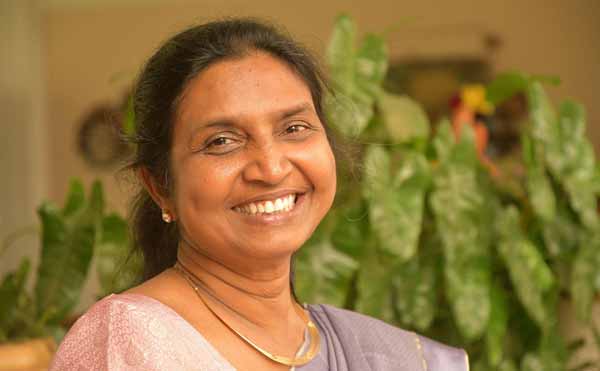
—————-
8. Who has been appointed by the Central Government as the Executive Director of Asian Development Bank (ADB)?
a. Manoj Desai
b. Vikas Divya
c. Vikas Shil
d. Vinod Gupta
Answer: c. Vikas Shil
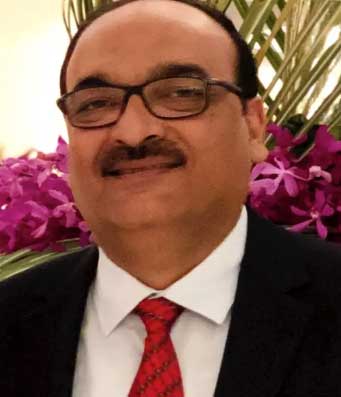
– He has been appointed as the Executive Director of the Asian Development Bank (ADB) for a term of three years.
– He is a 1994 batch officer of the Chhattisgarh cadre of the Indian Administrative Service (IAS).
– Prior to this, he held the position of Additional Secretary and Mission Director of the Jal Jeevan Mission under the Ministry of Jal Shakti.
Asian Development Bank (ADB)
– Headquarters: Mandaluyong, Philippines
– Establishment: December 19, 1966
– Member Countries: 68 (including 49 from Asia)
—————-
9. Name the Indian Ambassador (Permanent Representative) to the WTO in Geneva?
a. Senthil Pandian C
b. Senthil kumar
c. Brajendra Kumar
d. Shashi Navneet
Answer: a. Senthil Pandian C

– The Central Government has appointed the Indian Ambassador (Permanent Representative) to the World Trade Organization (WTO) in Geneva for the next three years (from March 2024).
– He is a 2002 batch IAS officer from the Uttar Pradesh cadre.
– Senthil Pandian C is currently posted as Commissioner of Excise, Uttar Pradesh.
– His appointment comes at a time when the world is grappling with currency fluctuations, high-interest rates, and geopolitical tensions.
– He will replace Brajendra Navnit in the WTO.
World Trade Organization (WTO)
– Establishment: 1995
– Headquarters: Geneva, Switzerland
– Director-General: Ngozi Okonjo-Iweala
– 13th Ministerial Conference: Held in Abu Dhabi (UAE) in February 2024.
—————-
10. Which IIT created the first high-resolution landslide risk map, which will facilitate identification and rescue of hazardous areas?
a. IIT Bombay
b. IIT Kanpur
c. IIT Delhi
d. IIT Guwahati
Answer: c. IIT Delhi
– A team from IIT Delhi has created the first high-resolution landslide risk map for India.
– Researchers have also developed an online portal to locate areas on the map for people.
This map data is available for free.
– Towards the end of 2023, heavy rainfall and landslides occurred in several states of Northern India during the post-monsoon season, causing significant floods. This resulted in the death of hundreds of people. – Additionally, the country faces numerous fatalities due to landslides.
– In response to this, a national landslide vulnerability awareness map has been created. It will help identify the most dangerous areas.
– Until now, India did not have a nationwide landslide vulnerability awareness map on such a scale.
– The team, led by Manmohan Saharia, Assistant Professor in the Civil Engineering Department at IIT Delhi and head of the HydroSense Lab at IIT Delhi, prepared this map.
Map Name – ‘Indian Landslide Susceptibility Map’
– No place in the country has been left out in this map.
The Early Warning System
– The map includes some well-known regions with high landslide vulnerability.
– Such as parts of the Himalayan foothills, the Assam-Meghalaya region, and the Western Ghats.
– It also identifies some previously unknown areas with high risk.
– Such as certain regions in the Eastern Ghats, just north of Andhra Pradesh and Odisha.

